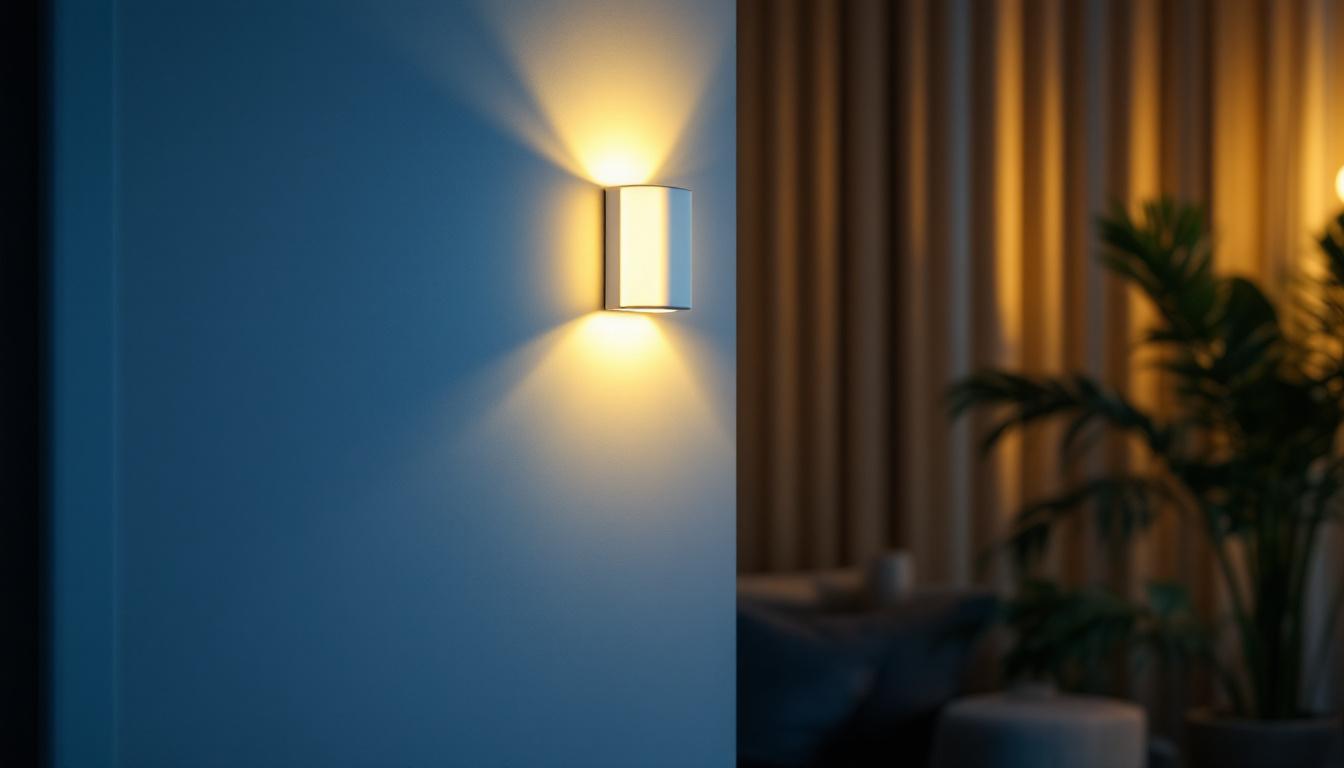
As the demand for energy-efficient lighting solutions continues to grow, flicker light bulbs have emerged as a popular choice among consumers. However, the flickering effect that some bulbs produce can be a source of frustration for both contractors and clients alike. Understanding the best practices for installing and troubleshooting flicker light bulbs is crucial for lighting contractors aiming to provide exceptional service and ensure customer satisfaction.
Flicker light bulbs are designed to mimic the natural light spectrum while offering energy efficiency. However, they can sometimes exhibit flickering, which may be caused by several factors. For lighting contractors, understanding the underlying reasons for flickering is essential to address client concerns effectively.
There are various types of flicker light bulbs available on the market, including LED, CFL, and incandescent options. Each type has its unique characteristics and potential flickering issues. LED bulbs, for example, are known for their energy efficiency but can flicker due to incompatible dimmers or poor-quality drivers. On the other hand, CFLs may flicker when they are nearing the end of their lifespan.
Understanding these differences can help contractors recommend the most suitable lighting solutions for their clients while minimizing the risk of flickering. This knowledge also aids in troubleshooting when clients report flickering issues. Moreover, incandescent bulbs, while less energy-efficient, tend to have a more consistent light output, making them less prone to flickering. However, they can still exhibit flickering if there are issues with the electrical supply or connections, highlighting the importance of a thorough assessment of the entire lighting system.
Flickering can stem from a variety of sources, including electrical issues, bulb quality, and compatibility with fixtures. One common cause is the use of incompatible dimmer switches, which may not be designed to handle the specific type of bulb being used. Additionally, fluctuations in the electrical supply can lead to flickering, particularly in older homes with outdated wiring.
Another factor to consider is the quality of the bulbs themselves. Low-quality bulbs may be more prone to flickering, making it essential for contractors to source reliable products from reputable manufacturers. By being aware of these common causes, contractors can better diagnose and resolve flickering issues for their clients. Furthermore, it’s worth noting that environmental factors, such as temperature changes and humidity levels, can also affect the performance of light bulbs. For instance, extreme cold can cause some LED bulbs to flicker more frequently, which may lead to misunderstandings about their reliability. Therefore, educating clients about these external influences can enhance their understanding and satisfaction with their lighting choices.
Proper installation is key to minimizing flickering and ensuring optimal performance of light bulbs. Lighting contractors should adhere to best practices during the installation process to provide clients with a seamless experience.
When selecting flicker light bulbs, it is important to consider the specific needs of the client and the environment in which the bulbs will be used. For instance, in areas where dimming is required, contractors should opt for LED bulbs that are specifically labeled as “dimmable.” This ensures compatibility with dimmer switches and reduces the likelihood of flickering.
Furthermore, contractors should prioritize quality over cost. Investing in higher-quality bulbs can lead to fewer issues down the line, resulting in increased customer satisfaction and fewer callbacks. Additionally, understanding the color temperature and lumens required for different spaces can enhance the overall ambiance. For example, warmer tones are often preferred in living areas for a cozy feel, while cooler tones may be more suitable for workspaces that require focus and clarity.
Before installing flicker light bulbs, it is crucial to inspect the existing wiring in the fixture. Loose connections or outdated wiring can contribute to flickering. Contractors should ensure that all connections are secure and that the wiring meets current safety standards.
If necessary, upgrading the wiring or replacing old fixtures can significantly improve the performance of flicker light bulbs. This proactive approach not only enhances the lighting experience for clients but also demonstrates the contractor’s commitment to quality work. Moreover, it is beneficial to educate clients about the importance of regular maintenance and inspections of their lighting systems. By doing so, contractors can help clients understand how to identify potential issues early, which can prevent more significant problems and expenses in the future. This level of service not only builds trust but also positions the contractor as a knowledgeable resource in the field of lighting solutions.
Despite best efforts during installation, flickering issues may still arise. Knowing how to troubleshoot these problems is essential for lighting contractors to maintain client trust and satisfaction.
When clients report flickering, the first step is to identify the source of the issue. Contractors should ask questions about when the flickering occurs—whether it happens when the lights are dimmed, when other appliances are in use, or at specific times of day. This information can help narrow down potential causes.
Additionally, testing the bulbs in different fixtures or swapping them with known working bulbs can help determine if the issue lies with the bulb itself or the electrical system. A systematic approach to troubleshooting can save time and lead to a quicker resolution. It’s also beneficial to educate clients on the types of bulbs they are using, as certain LED bulbs may not be compatible with specific dimmer switches, leading to flickering. Understanding the technology behind the fixtures can empower both contractors and clients to make informed decisions about lighting choices.
If the flickering is determined to be related to electrical issues, contractors should assess the overall electrical system. This may involve checking the circuit breaker, inspecting for loose connections, or evaluating the load on the circuit. In some cases, it may be necessary to consult with a licensed electrician to address more complex electrical problems.
By taking these steps, contractors can ensure that flickering issues are resolved effectively, leading to a more satisfying experience for clients. Furthermore, it’s important to remind clients about the significance of regular maintenance checks for their lighting systems. Over time, connections can loosen, and wear and tear can affect performance. Encouraging clients to schedule periodic inspections can prevent flickering issues from arising in the first place and foster a proactive approach to home maintenance. This not only enhances the longevity of the lighting systems but also reinforces the contractor’s commitment to quality service and customer care.
Client education is an important aspect of being a successful lighting contractor. Many clients may not fully understand the reasons behind flickering or the benefits of flicker light bulbs. Providing clear and concise information can enhance the contractor-client relationship and empower clients to make informed decisions.
Flicker light bulbs offer several advantages, including energy efficiency, longer lifespan, and reduced heat output compared to traditional incandescent bulbs. Educating clients about these benefits can help them appreciate the value of investing in quality lighting solutions.
Moreover, discussing the environmental impact of using energy-efficient bulbs can resonate with clients who are conscious of their carbon footprint. By highlighting these benefits, contractors can position themselves as knowledgeable professionals who care about their clients’ needs and the environment.
In addition to educating clients about the benefits of flicker light bulbs, providing maintenance tips can help prolong the lifespan of the bulbs and reduce the likelihood of flickering. Contractors should advise clients on how to care for their lighting fixtures, including cleaning bulbs and ensuring that fixtures are free from dust and debris.
Furthermore, clients should be informed about the importance of using compatible dimmer switches and the potential impact of using low-quality bulbs. By offering these insights, contractors can foster a sense of trust and reliability, encouraging clients to return for future projects.
The lighting industry is constantly evolving, with new technologies and products emerging regularly. For lighting contractors, staying informed about these trends is essential to remain competitive and provide clients with the best possible service.
Many organizations and manufacturers offer continuing education courses for lighting professionals. These courses can cover a range of topics, including advancements in lighting technology, energy efficiency standards, and best practices for installation and troubleshooting.
By participating in these educational opportunities, contractors can enhance their skills and knowledge, allowing them to better serve their clients and stay ahead of the competition. Additionally, staying informed about industry trends can lead to new business opportunities and partnerships.
Networking with other lighting professionals can provide valuable insights and foster collaboration. Attending industry trade shows, conferences, and local meetups can help contractors connect with peers and share experiences related to flicker light bulbs and other lighting solutions.
Building a network of industry contacts can also lead to referrals and recommendations, further enhancing a contractor’s reputation in the field. By engaging with the broader lighting community, contractors can stay updated on the latest products and best practices.
Flicker light bulbs present both opportunities and challenges for lighting contractors. By understanding the types of bulbs, common causes of flickering, and best practices for installation and troubleshooting, contractors can provide exceptional service to their clients. Educating clients about the benefits of flicker light bulbs and staying informed about industry trends further enhances a contractor’s ability to succeed in a competitive market.
Ultimately, the key to minimizing flickering issues lies in a combination of quality products, proper installation techniques, and proactive troubleshooting. By following these best practices, lighting contractors can ensure a positive experience for their clients and establish a reputation for excellence in the lighting industry.
Ready to elevate your lighting game and deliver flicker-free solutions to your clients? Look no further than LumenWholesale for all your lighting needs. Our commitment to quality and affordability ensures that you can access the best spec-grade lighting products at wholesale prices. Say goodbye to flickering issues and hello to smooth, efficient lighting with our extensive selection that meets the highest industry standards. Take advantage of our hassle-free bulk buying with free shipping and no hidden fees. Don’t compromise on quality or cost—Wholesale Lighting at the Best Value is just a click away. Experience the LumenWholesale difference today!

Discover the essential role of timer switch battery walls in modern lighting installations.

Discover how LED motion sensors can revolutionize your home or business lighting, offering unmatched energy efficiency and convenience.

Discover the insider tips and expert techniques lighting contractors use to masterfully install LED under cabinet spotlights.

Explore how LED outside lights are revolutionizing the projects of lighting contractors, enhancing energy efficiency, design flexibility, and sustainability.